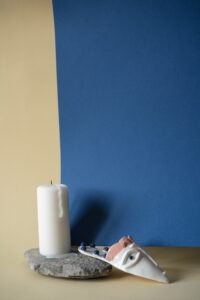The Enigmatic Features Of Earwax

The Enigmatic Features Of Earwax
The Enigmatic Features Of Earwax: Earwax is an odd substance that is secreted in the ears. Is it meant to kill bugs? What exactly is it constructed of?
Whales’ ears are never cleaned. Their earwax accumulates year after year leaving a kind of life history of fatty acids, alcohols, and cholesterols behind. Many mammals, including humans, have the waxy substance accumulated in their ear canals.
Human earwax, on the other hand, is far less intriguing. It contains no autobiography, and most of us regularly clean the waxy deposits in our ears (more on that later). Nonetheless, there is some fascinating science underlying this seemingly innocuous chemical.
Cerumen is the proper name for the substance. It is created exclusively in the outermost section of the ear canal by a combination of one to two thousand sebaceous glands (which also help keep hair greasy on the head) modified sweat glands. Add some hair, dead skin, and other biological detritus to the mix, and you have the recipe for earwax.
A long time ago, it was widely believed the significant purpose of earwax was lubrication (thus the use of it in lip balms), but it is also supposed to keep insects out of the inner recesses of the skull. Some people believe that earwax can work as an antibiotic.

Tue-Jyi Chai and Toby C. Chai of the National Institutes of Health collected earwax from 12 people in 1980 using a device dubbed a “sterile earwax hook” and mixed it in an alcohol solution.
Then they threw some bacteria into the mix. The earwax killed 99 per cent of numerous strains of bacteria, including H. influenzae (which, confusingly, does not cause influenza but rather a different type of infection) and a strain of E. coli known as K-12.
Other E. coli strains and streptococci and staphylococci were somewhat more resistant to earwax, with mortality rates ranging from 30% to 80%. Despite this, the earwax demonstrated apparent bactericidal effects on all ten species of bacteria examined.
Similar results were found in a German research project published in 2011. In that study, ten peptides identified in earwax inhibited the growth of bacteria and fungi. Infections in the external auditory canal, according to the study, occur when the earwax-based defence system fails.
It is genetically determined whether you have moist or dry earwax.
At the University of La Laguna, in the Canary Islands, a study was undertaken in 2000, on the other hand, discovered the inverse.
Instead, researchers discovered a neutral impact in a staphylococcal strain, and in most cases, earwax supported the growth of bacteria, including E. coli, owing to the abundant nutritional supply. It’s not the first study that calls earwax’s proclivity for microbial homicide into question.
One item may shed insight on the disparities in the findings of this and other investigations. The wax from patients with dry earwax was used in the 1980 and 2011 research, while the wet form was studied in the 2000 study.
It’s not apparent whether this distinction underpins earwax’s alleged antibacterial qualities, but it’s a compelling notion, especially given that both varieties are formed of essentially the same components.
If you haven’t been peering into your friends’ ear canals, you might be startled, as I was, to learn that there are two varieties. Mine is dripping wet.
The presence of wet or dry earwax is hereditary and is determined by a single letter on a single gene.
ABCC11 is the gene, and if you have an A instead of a G, your earwax is dry. (The two forms of earwax that develop also smell differently.) This is an unusual case of Mendelian inheritance in which the wet type is dominant.
Earwax has even been used to trace human migratory patterns because the pattern is so predictable. People of Caucasian or African heritage are more likely to have moist earwax in their ears, whereas East Asians are more likely to have dry, scaly earwax.
Pacific Islanders, Central Asians, and Asian Minorities, as well as Native Americans and Inuit, have an equal ratio of the two.
To soften the penetrated earwax, doctors can use almond or olive oil.
However, for most of us, the most pressing earwax-related question is how to remove it. It’s a question that seems to have plagued humanity since at least the first century AD. Aulus Cornelius Celsus, a Roman physician, proposed several eliminating earwax in his book De Medicina.
“If there is a crust,” he said, possibly referring to persons who have dry earwax, “hot oil is put into it, or verdigris mixed with honey or leek juice, or a little soda in honey wine.” Ouch. The wax may be washed away with water once it has disintegrated. “If the wax is involved,” he added, possibly referring to the moist type, “When the wax is loosened, the ear is rinsed out with vinegar and a little soda.”
He also provided advice “sprinkling with the ear with castoreum mixed with vinegar, bay oil, and young radish bark juice, or cucumber juice combined with crushed rose petals. In addition, injecting unripe grape juice mixed with rose oil is very good against deafness.”
All of this seems a little more sensible than a recipe containing the eye of a newt, but surgeons may still use almond or olive oil to soften the afflicted wax before attempting to remove it.
The truth is that some people have earwax-related symptoms severe enough to necessitate surgery. According to a 2004 study, over 2.3 million people in the United Kingdom visit their doctor each year for such problems, and approximately four million ears are treated each year.
Earwax is a common problem for the elderly, children, and persons with learning disabilities. Of course, this can result in hearing loss, but it can also cause social disengagement and even mild psychosis. “Some patients with clogged earwax exhibit ruptured eardrums,” the researchers write.
Because cerumen cannot perforate the eardrum, this perforation is self-inflicted, likely resulting from sufferers attempting to remove the condensed wax themselves.
Because the hazards of using a cotton swab are so substantial, most clinicians rely on an emollient followed by irrigation. There is, however, no medical consensus on which emollient is best or whether rinsing is even necessary.
Anjali Vaidya and Diane J. Madlon-Kay of the University of Minnesota Medical School stated in 2012 that while wax softening, rinsing, or other manual removal methods are conceivable, none has been proved to be possibly better, safer, or more effective than the others.
These operations, however, are best left to professionals. Despite the risks, some people proudly insert cotton swabs in their ears after showering, despite doctors’ advice to avoid doing so.
In order to avoid perforating one’s ears, it’s a good idea not to use this method at all. The absorbent cotton at the end of the swab can occasionally slip off and become lodged in the ear canal.
Avoid doing this if you want to learn something. (Or, at the very least, keep the swab away from the ear canal.)
Ear candling is another alternative medicine technique that should be avoided at all costs.
Another procedure that should be avoided at all costs is ear candling, an alternative medicine practice. Holding a hollow candle made of beeswax or kerosene to the ear and lighting it is how this is done.
The empty candle’s heat is supposed to be the culprit. will drive earwax out of the ear canal, where it can be readily cleaned.
If this seems insane to you, you are correct. There is no evidence to support this theory, and there is plenty of evidence that burning hot candle wax on the eardrum is extremely painful and should be avoided. So be cautious.






